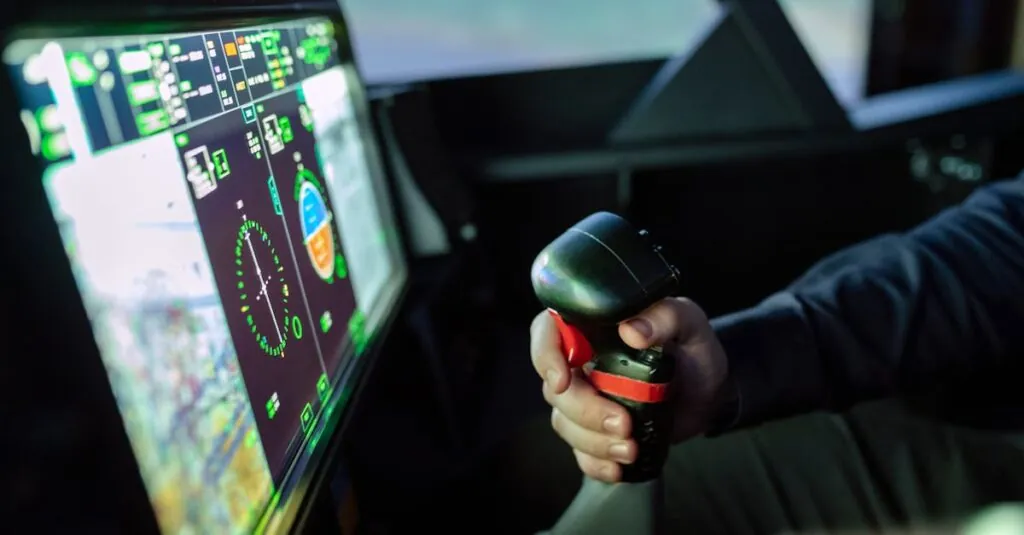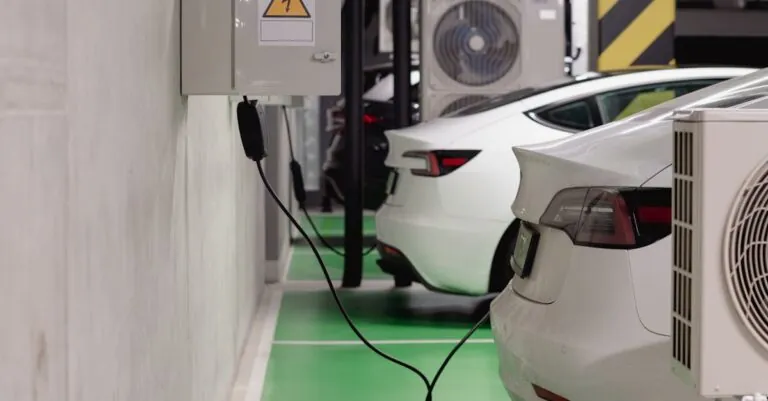Table of Contents
ToggleIn a world where cars are becoming more like smartphones on wheels, the digital cockpit is the shiny new feature that’s stealing the spotlight. Gone are the days of clunky dashboards and analog dials. Now, drivers can enjoy a sleek interface that’s as intuitive as their favorite app. Imagine a cockpit so advanced that it practically drives itself—well, almost!
The digital cockpit isn’t just about looking cool; it’s about enhancing the driving experience. With real-time data at their fingertips, drivers can access navigation, entertainment, and vehicle status all in one place. It’s like having a co-pilot who’s always got their head in the game. Buckle up as we dive into the fascinating world of digital cockpits and discover how they’re revolutionizing the way we hit the road.
Overview of Digital Cockpit
The digital cockpit represents a significant advancement in automotive technology. It replaces traditional dashboards with digital displays that streamline the user experience.
Definition and Purpose
A digital cockpit serves as a central hub for vehicle information, combining interfaces for navigation, entertainment, and vital vehicle data. Its purpose revolves around enhancing driver convenience and safety by offering easy access to essential features. Real-time updates and customizable displays improve engagement, allowing drivers to tailor their experiences. This technology acts as a co-pilot, providing assistance and ensuring that drivers remain focused on the road.
Evolution of Automotive Cockpits
Automotive cockpits have evolved from simple analog dials to sophisticated digital interfaces. Initially, physical gauges provided limited information; however, advancements in technology have transformed these into interactive displays. Various manufacturers now integrate touchscreen controls and voice recognition to optimize functionality. The shift to digital interfaces enhances aesthetic appeal and offers drivers more control over their vehicle systems. As this evolution continues, the future of cockpits promises even greater integration of artificial intelligence and connectivity features.
Key Features of Digital Cockpit
Digital cockpits incorporate advanced technologies that enhance vehicle functionality and user engagement. They prioritize seamless integration of features that cater to modern drivers’ needs.
User Interface and Experience
User interfaces in digital cockpits offer intuitive navigation and accessibility. Display screens utilize high-resolution graphics, ensuring clarity and ease of use. Touchscreen controls enable swift interaction, allowing users to manage settings without distraction. Customizable layouts assist drivers in personalizing their experience according to preferences. Enhanced voice recognition technology allows for hands-free control, ensuring safety during operation. Overall, a user-centric design creates a more enjoyable driving atmosphere.
Connectivity and Integration
Connectivity plays a crucial role in digital cockpit functionality. Systems typically support smartphone integration through platforms such as Apple CarPlay and Android Auto. Real-time data synchronization provides access to live traffic updates, navigation directions, and weather reports. Vehicle-to-vehicle communication improves safety by sharing critical information between cars. Advanced cloud services ensure software updates occur automatically, maintaining system efficiency. An integrated ecosystem fosters a comprehensive experience, reinforcing the relationship between the driver and the vehicle.
Benefits of Digital Cockpit
Digital cockpits offer numerous advantages that significantly enhance the driving experience. These benefits include enhanced safety features and improved driver and passenger comfort.
Enhanced Safety Features
Enhanced safety features are integral to digital cockpits. Real-time data displays provide critical information about vehicle status, navigation, and traffic conditions. Systems equipped with advanced driver assistance capabilities alert drivers to potential hazards, thus reducing collision risks. Voice recognition technology allows drivers to operate essential functions hands-free, minimizing distractions while driving. Furthermore, vehicle-to-vehicle communication systems share data between cars, improving situational awareness. These technologies collaborate to create safer driving environments.
Improved Driver and Passenger Comfort
Improved driver and passenger comfort is a standout benefit of digital cockpits. Customizable interfaces adjust display settings to individual preferences, creating a more personal experience. High-resolution graphics ensure clarity and ease of use, enabling quick access to navigation and entertainment options. Connectivity features enable seamless smartphone integration, allowing access to apps and music effortlessly. In addition, advanced climate control systems adjust to occupants’ preferences, enhancing overall comfort. Together, these elements create a more enjoyable journey for everyone in the vehicle.
Challenges and Considerations
Digital cockpits face several challenges, from technical limitations to regulatory hurdles. Understanding these factors is crucial for effective implementation.
Technical Limitations
Connectivity issues can disrupt the seamless integration of digital cockpit systems. Limited bandwidth affects real-time data access, impacting navigation and communication features. Battery life of in-vehicle devices presents another concern, as continuous usage drains power quickly. Hardware compatibility also poses challenges, as older vehicles often lack necessary infrastructure. Moreover, software glitches may arise, hindering user experience and rendering features unusable. Ensuring responsiveness and reliability in various environmental conditions remains essential for developers.
Regulatory and Compliance Issues
Regulatory compliance impacts the deployment of digital cockpits. Standards for data privacy and security must be followed to protect user information. Additionally, safety regulations guide the development of features that enhance driving without distraction. Manufacturers face scrutiny regarding human factors and usability; ensuring user interfaces do not compromise attention is vital. Certification processes for new technologies can slow down innovation, necessitating thorough testing before market release. Navigating these regulations requires collaboration between industry stakeholders and regulatory bodies.
Future Trends in Digital Cockpit Technology
Digital cockpit technology is rapidly evolving, driven by innovations in artificial intelligence and machine learning. These advancements enhance user engagement, offering personalized experiences. AI can analyze driver behavior, adapting interfaces to meet individual needs. Machine learning algorithms improve voice recognition, allowing for more accurate and intuitive commands. Real-time data processing enables systems to predict traffic conditions, enhancing navigation capabilities.
Advancements in AI and Machine Learning
AI and machine learning lead the charge in digital cockpit enhancements. Systems become more intuitive, learning from user patterns to provide tailored recommendations. Personalization extends to infotainment options, delivering content based on preferences. Natural language processing makes interactions smoother, enabling complex commands with ease. Additionally, real-time algorithms adjust climate settings and seat configurations for comfort, enhancing the overall driving experience.
The Role of Autonomous Driving
Autonomous driving significantly influences digital cockpit design. Cockpits evolve to support increased automation levels, focusing on passenger comfort and entertainment. Systems will incorporate advanced safety features, providing real-time communication about potential hazards. Increased reliance on automation allows drivers to engage in leisure activities, utilizing infotainment systems for movies or games. Furthermore, when fully autonomous vehicles become mainstream, digital cockpits will shift from driver-centric controls to holistic user experiences, ensuring seamless integration of entertainment and information.
Digital cockpits are redefining the driving experience by merging technology with user-centric design. As vehicles evolve into connected platforms, the emphasis on safety and comfort becomes paramount. Enhanced interfaces not only provide essential information but also create a personalized environment that caters to individual preferences.
Future innovations in AI and machine learning promise to further enhance these systems, making them even more intuitive and responsive. As the automotive industry continues to embrace this digital transformation, drivers can expect a seamless blend of functionality and enjoyment on the road. The journey ahead is exciting as digital cockpits pave the way for smarter and safer driving experiences.







